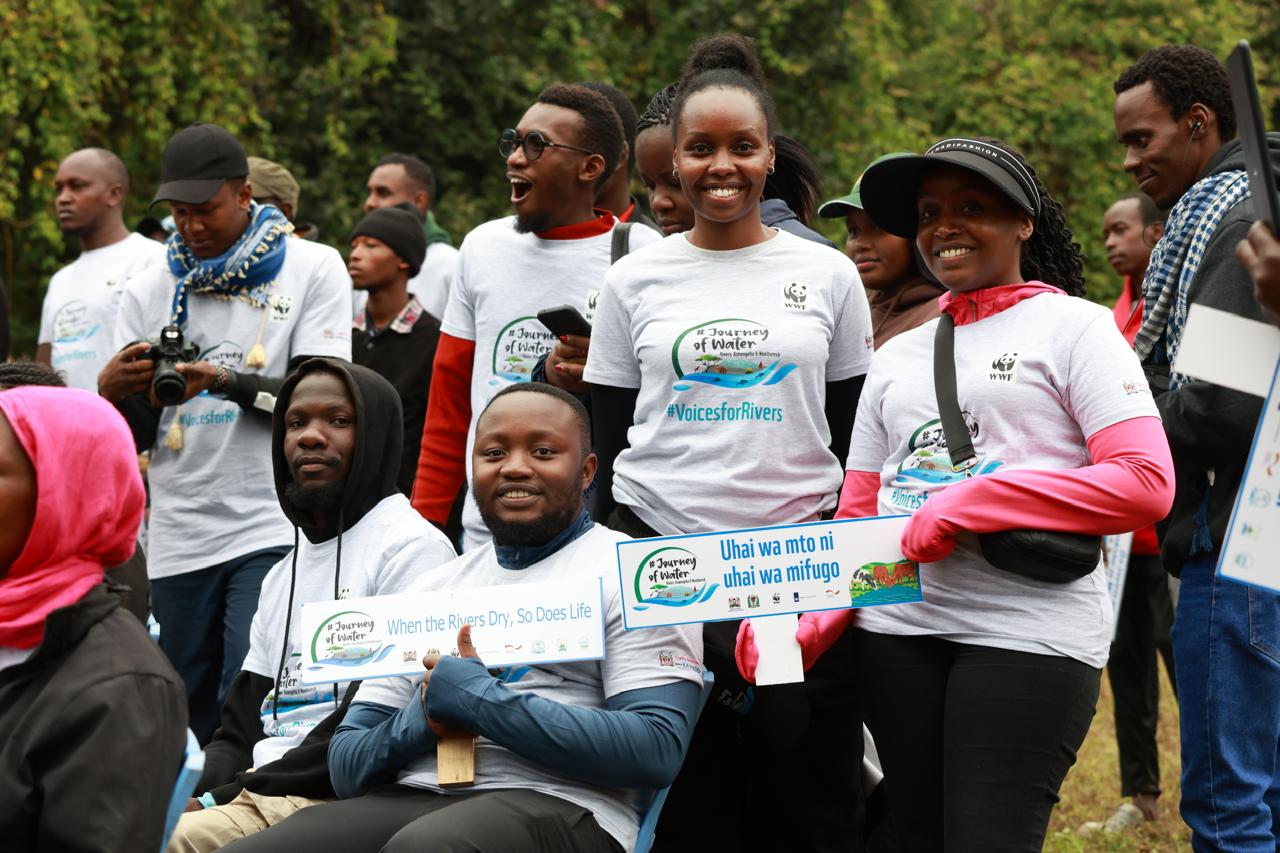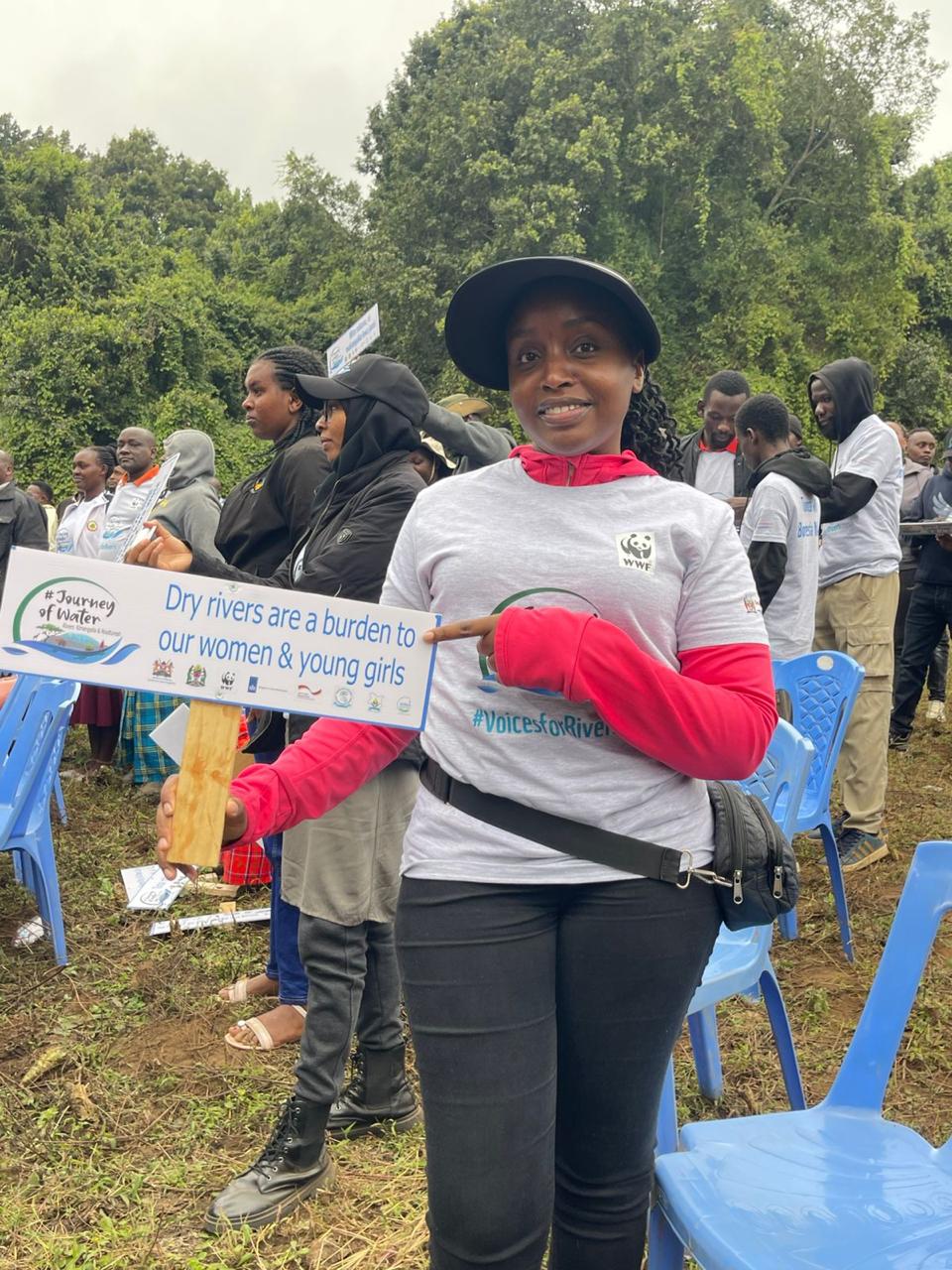
 Participants during the Journey of Water campaign 2025./HANDOUT
Participants during the Journey of Water campaign 2025./HANDOUTIn the dry stretches of Kenya’s arid and semi-arid regions, the daily search for water can begin before sunrise. Women, often accompanied by young children, walk for miles in blistering heat—buckets in hand, hope in heart.
For many, this is life. But to conservationists like Nancy Rapando, it shouldn’t be.
Nancy Rapando, the Africa Food Future Leader at the World Wide Fund for Nature (WWF), believes that empowering women is key to solving East Africa’s water crisis.
“Women suffer the most when water is scarce,” she says. “They are the ones taking care of families, ensuring there’s food, cleanliness and dignity in the home. Yet, when it comes to decision-making around water, their voices are often missing.”
Her message was echoed during the recently concluded Journey of Water campaign—an ambitious WWF-led initiative that crossed borders for the first time, linking Tanzania and Kenya in a shared mission to protect water sources.
The fourth edition of the campaign traced the River Kimengelia’s path, starting from its source in Rongai, Tanzania, through Noolturesh Spring and ending at Olposare Spring in Iltilal, Kenya. The theme—Rivers Without Borders: One Source, Shared Future—captured the essence of the journey: cooperation between nations, inclusion of communities, and protection of water as a common resource. Along the route, walkers met with villagers, local leaders and conservationists.
They listened. They learned. One consistent concern emerged—women bear the brunt of water scarcity but are rarely part of the solution. In many pastoral communities, livestock are prioritised over people during droughts.
“What we see is women walking farther and farther to find water while cattle are watered first at community boreholes,” Rapando said.
“It’s an injustice hidden in plain sight.” The ripple effects extend beyond the home. When mothers are on the road fetching water, children—especially girls—often stay behind or skip school to help. “It disrupts education. It delays dreams,” Rapando said.
The Journey of Water isn’t just a symbolic walk. It’s also a platform for policy and action. This year, it ended with a town hall meeting that led to several resolutions. Among them: the formation of local water committees that must include women representatives.
There were also calls for accessible technologies like solar pumps and closer boreholes to ease the physical burden on women. Training programmes tailored for women were proposed—covering water recycling, household purification and leadership in water governance.
These are not just workshops; they are tools for independence. While Kenya and Tanzania share the same water source, the journey revealed striking differences in how they manage it.
In Tanzania’s upper catchment areas, forests—both natural and planted—are well preserved. The water remains clear, unpolluted by plastics and largely untouched by human interference.
Air quality is clean and riparian zones are mostly respected. Back across the border in Kenya, the picture is more complex.
The government has constructed a dam in Ngama Area 51 for irrigation and domestic use, but locals complain they were never consulted. Community participation, they say, was absent.
In Rombo District, Tanzanian officials like Commissioner Raymond Mangwala highlighted their proactive efforts—planting indigenous trees near water catchments, enforcing environmental laws and involving schoolchildren in conservation education.
“We want every household to access clean water,” Mangwala said. “But for conservation to work, communities must benefit.” Still, challenges exist on both sides.
In Tanzania, farming near rivers—often within 60 metre of the banks—is threatening fragile riparian ecosystems. And in Kenya, problems multiply downstream: unregulated farming in wetlands, flood irrigation, illegal water abstraction with portable generators and pesticide runoff are degrading water quality.
Some rivers are completely diverted into private canals, leaving downstream communities without a drop. Springs are polluted by livestock. Charcoal burning and tree cutting continue unchecked.
Rising conflicts—some involving illegal armed groups—add to the strain. There’s also a growing gap between water users and the laws meant to protect them.
Many communities lack awareness about sustainable farming or water regulations. Others ignore them outright. For women, the consequences are immediate: longer walks, less water and rising health risks from chemical contamination.
Kenya National Association of Water Resources Users’ Associations CEO Enock Ole Kiminta called on the government to step up.
“Enforce the laws. Arrest those diverting water illegally. Hold regular public forums to educate people. Water is not a private asset—it belongs to all of us.”
For Rapando and many others who walked the river’s course, one thing is clear: sustainable water management must start with inclusion. If the region wants a future where rivers still run and communities thrive, women cannot be left behind.
 A Journey of Water campaign 2025 participant with a placard.
A Journey of Water campaign 2025 participant with a placard. 












